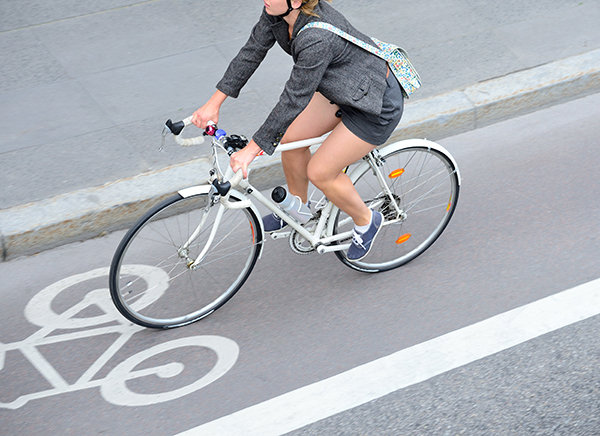Walking, Biking and Taking Riding on the bus Linked to Lower Weight


By Andrew M. Seaman
Reuters Health
People who walk, bike or take public transport to your workplace are generally thinner as opposed to those who ride in their own cars, according to new research from the UK.
The new findings – including that taking public transit only agreed to be as beneficial because other \”active commuting\” modes – point out significant health improvements across society if more people left their cars in the home, researchers say.
\”It appears to suggest varying your commute mode – where you could build with a little bit of incidental physical activity – you will be qualified to lessen your chance to get overweight and have a healthier body composition as well,\” said Ellen Flint, who led case study.
Flint and her colleagues from London School of Hygiene and Tropical Medicine and University College London write at TheBMJ.com that physical activity has decreased combined with proportion of people taking active modes of transportation to operate.
There can be evidence to suggest greater increases in obesity rates in areas with larger declines in active travel, they add.
Active travel or commuting typically is the term for walking or biking to function, but Flint and her colleagues suggest the concept of a should be expanded that include taking public transportation, for instance buses and trains.
In their study, Flint said, they found folks who reported approaching work weren\’t walking far – in regards to a mile or less.
\”The walking that goes into commuting to or buses is really a similar amount,\” she told Reuters Health.
While there is certainly evidence to aid a keyword rich link between walking and biking to be effective and reduced weight, there is very little research workout routines looks at folks that take the.
For the revolutionary study, Flint and her colleagues used data collected from the national sample of people living in united kingdom who answered survey questions and were visited by way of nurse. They had data from 7,424 people how much excess fat they had and from 7,534 for their body mass index (BMI), a step of weight when compared with height.
In laptop computer, 76 percent of guys and 72 percent of ladies reported using a private mode of transportation – often car – to be effective. 10 percent of guys and 11 percent of ladies reported using mostly public transportation and 14 percent that face men and 17 percent of women walked or biked to work.
After adjusting for traits or behaviors which could influence weight or unwanted fat, including socioeconomic status as well as other exercise, they saw that folks that walked, biked or took the to your workplace had lower average BMIs and body fat percentages than folks that used private transportation.
\”When you compare trains and buses to personal transport the end result are pretty just like when comparing active transport to non-public transport,\” Flint said.
She and her colleagues write which the differences in body mass and fat could well be noticeable. By way of example, males who actively commuted to work or took riding on the bus had a BMI score between 0.9 and 1.1 points a lesser amount than the lads who drove themselves. That can be kind of like weighing about seven pounds less to get a older man of average height.
The men\’s body fat was also between 1.4 and 1.5 percentage points lower among active and or buses commuters, as compared to men that drove.
Similar effects were seen for women, whose BMI scores were between 0.7 and 0.9 points lower among active and public commuters compared to ladies that drove. For that 5-foot 4-inch woman the gap would mean about 6 lbs.
Amy Auchincloss of Drexel University in Philadelphia said the study\’s results are strong because its data are from people moving into many different areas, even though the findings can\’t prove that walking, biking or taking the actual bus causes individuals to shed extra pounds.
\”But at least it seems readily available preliminary data does not driving/not using automobiles will at the least aide populations in healthier weight maintenance – or even directly trigger healthier weight,\” Auchincloss, who had previously been not associated with the new study, said within a email.
Other decrease also suggested than a more active commute to be effective has a number of benefits, according to Anthony Laverty, who co-wrote an editorial accompanying the revolutionary study.
\”This study focuses on weight,\” he said. \”There can also be studies that report people who don\’t drive to your workplace are less likely to have bring about and diabetes.\”
\”If there were this big shift of persons taking or trains, walking or cycling you\’d probably have these benefits mount up,\” said Laverty, of Imperial College London.
With obesity prevention already attention of policymakers, Flint said taking care of acquiring more men and women to walk, bike or take the actual bus may perhaps be worthwhile.
\”In Britain – in common with numerous industrial nations – the vast majority of commuters use cars. Therefore you will find a huge prospects for an intervention of the means to access the for health benefit,\” she said.










